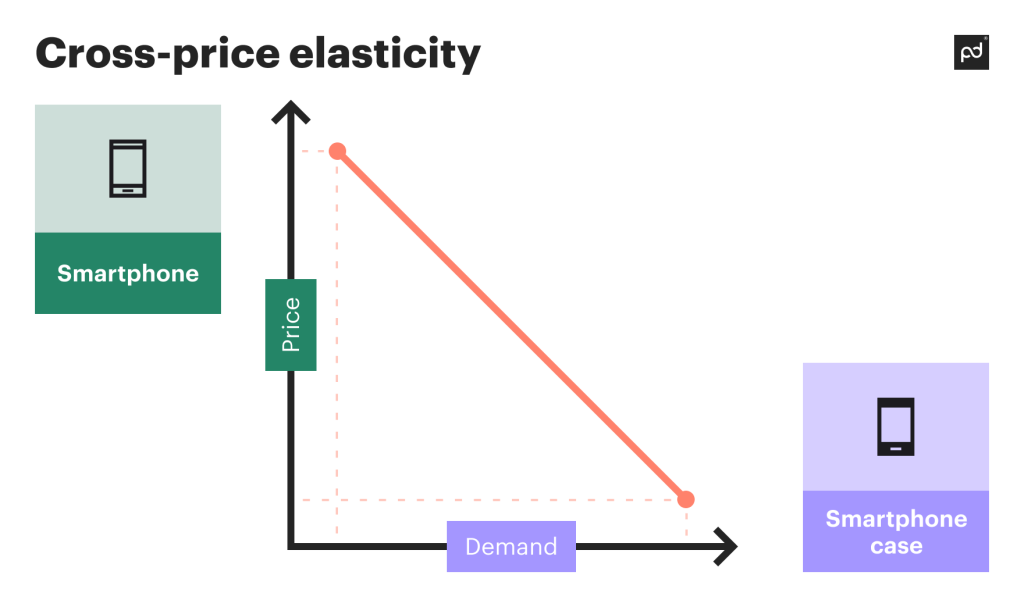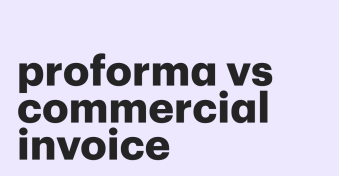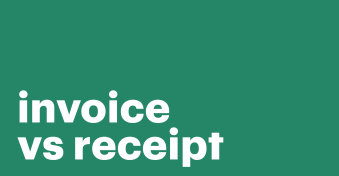What prices you set for your products can deeply impact the health of your business.
Raising prices may increase profits, but it may cause customers to flee.
Have you ever come across the concept of price elasticity and how it helps you optimize your pricing strategy?
Well, in this guide, we’ll explain price elasticity and how to calculate it.
Key takeaways
- Price elasticity measures the effect price has on supply and demand for goods and services.
- Products fall somewhere on the spectrum between perfectly elastic and perfectly inelastic.
- You can calculate price elasticity using the midpoint method or the point elasticity of demand.
- PandaDoc helps you better manage price elasticity and enhance sales workflows.
What is price elasticity
Price elasticity is a measure of how great or little the effect a product’s price has on its supply and demand.
It’s a concept used by economists to quantify the relationship between a product and how the market responds.
Inelastic goods and services are mostly unaffected by price changes. Products that have market performance affected by price changes are elastic.
Knowing a product’s elasticity helps you strategize when negotiating a price during a deal.
Price elasticity applies to several economic variables and market relationships.
We can better explain price elasticity by looking at some of these components.
Price elasticity of demand
Price elasticity of demand is the relationship between price and the demand of the market.
Elastic demand means that prices change when demand increases or decreases.
Inelastic demand is when a price change has minimal effect on demand.
Let’s look at energy suppliers as an example. If the price of electricity increases, the demand for electricity doesn’t change much.
Individuals and businesses still need electricity to go about their daily lives. In this case, the price of electricity is inelastic.
Price elasticity of supply
Price elasticity of supply identifies the correlation between price and supply in the market.
The basic theory is that when goods increase in market price, their supply increases.
When goods decrease in market price, their supply goes down.
When a product’s price changes, the supply to the market can decrease, increase, or remain the same.
Supply changes depend on the market’s ability to alter production in response to price changes.
The general idea is that if the market price of a product goes up, businesses want to take advantage.
Production ramps up, flooding the market with supply.
Some items have a limited supply, long lead times, or complex logistics.
These goods and services will be unable to keep up with price changes.
As supply decreases, prices will continually increase to maximize profits.
Let’s look at luxury goods as an example of price elasticity of supply. Rolex watches are quite expensive.
Should Rolex’s become in short supply, prices may go up.
The watchmaker can now increase their production relatively easily to capitalize on this higher demand.
Likewise, if demand goes down, pricing goes down.
But Rolex can quickly decrease production, lowering supply and minimizing overheard.
Cross-price elasticity
Cross-price elasticity is also known as elasticity of demand.
It measures how price changes of one good affect demand for another.
Products that are cross-price elastic have demand impacted by the pricing of other goods.
Let’s look at smartphone cases as an example of cross-price elasticity. People need smartphones.
However, if the price of smartphones goes up, consumers will likely hold onto their current phones for longer.
As people buy smartphones less often, they will have less need to buy a new smartphone case.
So, the pricing of smartphones directly affects the demand for cases.

What is the importance of price elasticity
Price elasticity is a vital piece of information that informs your pricing strategy.
Understanding elasticity helps optimize pricing for higher sales, revenue, and profits.
It also better prepares your monthly, quarterly, and annual planning.
How do companies use it
Companies use price elasticity in several ways.
Marketers measure price elasticity to discover how consumers perceive their products.
Price elasticity paints a clear view of where your goods and services lie within the market.
If demand stays about the same regardless of price, then consumers value your product.
The goal of any business is to put out an inelastic product.
Other ways organizations use price elasticity include:
- Demand forecasting: This helps you understand how price changes affect demand and anticipate sales fluctuations. You can optimize inventory management and supply chain logistics.
- Product innovation: Poor elasticity highlights products that need innovation or market differentiation. Tracking elasticity metrics helps you focus on areas for improvement to increase elasticity.
- Marketing campaigns: Inelastic goods require fewer discounts or promotional offers. You can increase the sales of elastic goods by lowering prices for optimal revenue or to run down tired stock.
- Competitive advantage: Monitoring the elasticity of your products gives you a leg up on the competition. You anticipate demand changes and adjust prices accordingly for elastic products.
- Customer journey: Price elasticity shapes the buying experience. Knowing how elastic your products are informs you of how to present pricing options to clients.
What are some of the common mistakes managers make with price elasticity
Price elasticity is measured by various formulae.
However, calculating elasticity doesn’t mean you know everything there is to know.
Here are some common mistakes managers make when using price elasticity:
- Being fully confident in elasticity data: In economics, we love to have quantifiable numbers. The reality is that the price a consumer is willing to pay today can suddenly change tomorrow. Placing too much faith in historical data leads to overconfidence and bad decisions.
- Not testing pricing extremes: You know how minor pricing changes affect demand. Price elasticity is not linear. You also need data that shows how extreme pricing changes affect demand.
- Not understanding your customers: Placing too much faith in price inelasticity (or elasticity) leads to a disconnect between your business and its target audience. Managers should still rely on market research and consumer feedback when making decisions.
- Forgetting about A/B testing: Many businesses A/B test new products for price before launch. Managers can forget to regularly test the market against product price adjustments. Even A/B price testing with small sample sizes keeps your data more up-to-date.
- Not building value: Managers can think too short-term and make several pricing mistakes. They focus on discounting elastic products. Instead, they should work with product development to create value and build inelasticity. Being short-sighted will lead your product line to stagnate.
Types of price elasticity
So far, we keep discussing “elastic” and “inelastic” goods. Price elasticity isn’t black and white.
There are different types of price elasticity. Each tells a different story about a product and how to get the most bang for your buck.
Let’s look at the following table for a comparison of price elasticity.
| Price Elasticity Type | Elasticity Formula Calculation | Application |
|---|---|---|
| Perfectly elastic | Infinity | Any price change brings demand down to zero. |
| Elastic | Greater than 1 | Price changes significantly affect demand. |
| Unitary or unit-elastic | Equal to 1 | Price and demand changes are equally proportional with a linear relationship. |
| Inelastic | Less than 1 | Price changes have little effect on demand. |
| Perfectly inelastic | 0 | Price changes have zero impact on demand. |
Elastic
After looking at the table, it’s clear that there is likely no perfectly elastic product.
In other words, perfect elasticity is theoretical.
Most elastic products will see a significant change in demand due to pricing changes.
However, it will take enormous price shifts to start approaching a demand of zero.
Unit elastic
A unit elastic product represents a perfectly linear graph of price vs demand.
If the price goes up five percent, demand goes down five percent, and vice versa.
Again, there is no product or service that is exemplary of this theoretical category.
Consumer behavior isn’t linear, but we can observe unitary relationships in narrow pricing windows.
For instance, let’s look at a streaming service. Netflix raises its prices by five percent. It then loses roughly five percent of its customers.
However, should they raise their prices 100 percent, it’s unlikely that they would lose every single customer.
Inelastic
A perfectly inelastic product has the same demand regardless of price.
There’s no real-world example of this. Perhaps if the air we breathe were monetized, we could say that price would not affect demand.
An inelastic product sees a relatively low impact on demand with price changes.
This means your team can stand firm during contract negotiations for sales agreements.
Again, we can look at energy suppliers.
People need the same amount of energy to go about their day, or do they?
A significant price increase does change consumer behavior.
Energy users make sure they turn lights off, wear warmer clothes, and reduce the usage of consumption-heavy luxuries, such as a jacuzzi.
The result is a decrease in demand with little impact on total revenue.
What are the determinants of price elasticity
Consumer behavior is difficult to predict at the best of times.
Knowing what determines price elasticity will help you stay ahead of the curve.
So, let’s take a look at the variables that affect elastic price.
What factors make a product elastic
Price changes significantly impact the demand for elastic goods and services.
Factors that make a product elastic include:
- Availability of suitable alternatives: Consumers will switch to available substitutes at lower prices.
- How necessary a product is for consumers: When prices go up, consumers cut luxuries out of the budget. Necessities are prioritized, leaving less important goods by the wayside.
- Proportion of average consumer income: Consumers can be priced out when expensive products increase in cost.
What makes a product unit elastic
Products can be unit elastic to a point.
For example, the price of flour may rise by ten percent and decrease demand by ten percentage points.
So why is this happening?
Factors that make a product unit elastic include:
- Minor price changes: Small changes of one to ten percent can cause a unitary decrease in demand.
- Commodity, necessity, or luxury: How interchangeable and vital are goods and services? Products that fall between necessity and luxury may experience unit elasticity.
What makes a product inelastic
Inelastic products are a dream for businesses like yours.
You can increase prices while seeing minimal change in demand, meaning greater revenue.
Factors that make a product inelastic include:
- No available substitutes: Products like utility services are difficult to replace.
- High priority of need: Goods and services that rank high among consumer needs are price inelastic.
- Limited supply: Small releases and limited supply mean price has little effect on demand. A unique painting is the ultimate limited supply. A limited run of sneakers will likely not see demand affected by higher prices.
- Habitual: Addictive and habit-forming goods and services are less impacted by price changes. Products like beer, cigarettes, and online gambling can be a part of customers’ daily rituals.
- Budget-friendly: Products represent a small proportion of the target audience’s income. Prices can go up, but they can still easily afford to purchase the items.
How to calculate price elasticity
Okay, so now you understand price elasticity.
But what does it all mean from a mathematical perspective?
Let’s take a look at several ways to determine price elasticity.
Midpoint method for elasticity
A popular method for economists to define elasticity is the midpoint method.
This method averages percentage changes when calculating price elasticity.
Since it deals with range, it is better for predicting elasticity.
Here’s the midpoint method formula:

Point elasticity method
Point elasticity is an alternative option of how to find price elasticity.
This method is better for calculating elasticity at a single point in time, such as the present.
On the other hand, the midpoint method is superior for determining price elasticity over a range of prices and quantities.
Here’s the point elasticity formula:

Price elasticity of demand formula
Price elasticity of demand helps you optimize your pricing strategy and forecast sales.
Calculating this value requires first calculating the percentage change in price and demand.
Calculate the percentage of change by taking the initial value and subtracting the new value.
Then divide that number by the original value to determine the percentage.
Once that’s done, you can complete the price elasticity of demand formula:

Price elasticity of supply formula
Price elasticity of supply determines how well you can respond to demand.
Failure to increase production with market demand means prices go up.
However, you may miss out on revenue.
Here’s how to compute price elasticity of supply:

If the value is greater than one, then you’re able to keep up with demand.
Cross-price elasticity formula
Cross-price elasticity quantifies the relationship between your product and others.
These may be competing goods and services. More likely, they’re complementary products.
It’s crucial to understand these relationships so you can plan with better accuracy.
Cross-price elasticity involves first calculating percentage changes.
First, compute the percentage change in the quantity of your product.
Second, calculate the percentage change in the price of the other product.
Here’s how it looks in the end:

How can you apply price elasticity
You can apply price elasticity in many different ways.
Use it to identify which products need pricing adjustments. Also, use it to identify which ones can be left alone.
You plan product goals around meeting elasticity goals. Quantify those goals and measure results with price elasticity.
Additionally, price elasticity helps you manage quotas and make better decisions.
All of these applications add up to a competitive advantage and robust longevity in your respective markets.
Price elasticity examples
Let’s glance at a few more examples of price elasticity.
Gasoline
Gas prices fluctuate depending on global markets and world events.
However, consumers still need gasoline to drive to work. Airlines and public transportation still need gasoline to maintain business continuity.
Prices go up and down, but demand remains mostly constant. Gasoline is relatively inelastic.
Designer handbags
Handbags by fashion designers have a complex relationship with supply and demand.
One of the reasons they are often in demand is due to their limited supply.
Supply is limited artificially. Increasing supply would lower demand.
The companies would then have to lower prices. Despite the relative scarcity, designer handbags are relatively elastic luxury items.
Concert tickets
Popular performers will sell out at each venue while on tour. Despite high prices, tickets for these artists sell out in minutes or hours.
Due to limited tickets, hundreds or thousands of consumers miss out on every performance.
Concert promoters can raise prices, lessening demand.
However, the tickets will still sell out if prices aren’t increased too much. Concert tickets have a relative inelasticity of supply.
Lead your team to quota and beyond with sales management software from PandaDoc
Price elasticity contributes to many areas of your business.
It’s vital to understand elasticity so that you can optimize prices and meet consumer demand.
With all the formulas, totals, and metrics your team needs, it can be easy to become disorganized.
Sales management software from PandaDoc has everything you need to lead your team to hit and exceed sales goals.
Live document tracking shows you exactly who’s viewed proposals and sales agreements.
CRM integrations help you stay on top of your best customers and understand their needs.
Greater insight into customer behavior helps you carve out the elasticity of your goods and services.
Start a 14-day trial today and find out what PandaDoc can do for you!
Frequently asked questions
-
Price elasticity doesn’t cost you anything. However, elastic pricing takes a more calculated approach than inelastic pricing. This means you may end up working harder to generate less revenue. You can combat price elasticity by creating innovative, differentiated, useful, and habit-forming products.
-
When price elasticity is high, supply and demand are sensitive to price changes. For example, a streaming music service that raises its prices by 10 percent sees a loss of customers of 25 percent. In that case, raising prices lowers the total revenue for the company.
Disclaimer
PandaDoc is not a law firm, or a substitute for an attorney or law firm. This page is not intended to and does not provide legal advice. Should you have legal questions on the validity of e-signatures or digital signatures and the enforceability thereof, please consult with an attorney or law firm. Use of PandaDoc services are governed by our Terms of Use and Privacy Policy.


